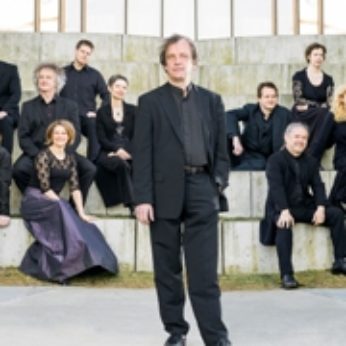Composer: Johann Sebastian Bach (b. 1685 - d. 1750)
Performance date: 05/07/2014
Venue: St. Brendan’s Church
Composition Year: 1720
Duration: 00:14:34
Recording Engineer: Damian Chennells, RTÉ lyric fm
Instrumentation Category:Small Mixed Ensemble
Instrumentation Other: 2vn, hpd, str
Artists:
Alina Ibragimova -
[violin]
Fredrik From -
[violin]
Concerto Copenhagen (Peter Spissky, Fredrik From, Antina Hugosson [violins], Torbjörn Köhl [viola], Kate Hearne [cello], Mattias Frostenson [bass], Fredrik Bock [archlute, guitar], Lars-Ulrik Mortensen [harpsichord, director]) -
[baroque ensemble]

Bach
probably wrote his Violin Concertos during his period at Köthen [1717-1723]
where his employer,Prince
Leopold of Anhalt-Köthen not only loved
but knew music. The Double Concerto was probably intended for the
outstanding player, Joseph Spiess who may have been partnered by Martin
Frivedrich Marcus in performances at the Court.
Bach’s indebtedness to Vivaldi is clear, after all he transcribed over a
dozen of Vivaldi’s Concertos for keyboard and he clearly incorporated much of
the Italian concerto style into his own compositions at this time. However, certain musicologists feel
that some of them, including this Concerto, may be from a later date, from his
time in Leipzig, his final posting.
Whatever the history of the Double Concerto may be, it is one of Bach’s
finest compositions for strings,
The first
movement opens with a cheerful theme presented in a fugal pattern by the
ensemble. Three different sections follow for the soloists, employing
variations on this theme and providing them with opportunities to display their virtuosity The sublime slow movement features a flowing,
serene melody which is passed between the soloists who embroider it with
deeply-moving passages. The lively finale is launched by a sprightly three-note
theme or ritornello. Contrasting episodes are provided by the soloists in a
most attractive series of fresh ideas until the ritornello returns, to bring
the Concerto to an up-beat conclusion.
Copyright © 2025 West Cork Music. All rights reserved.
Designed and developed by Matrix Internet